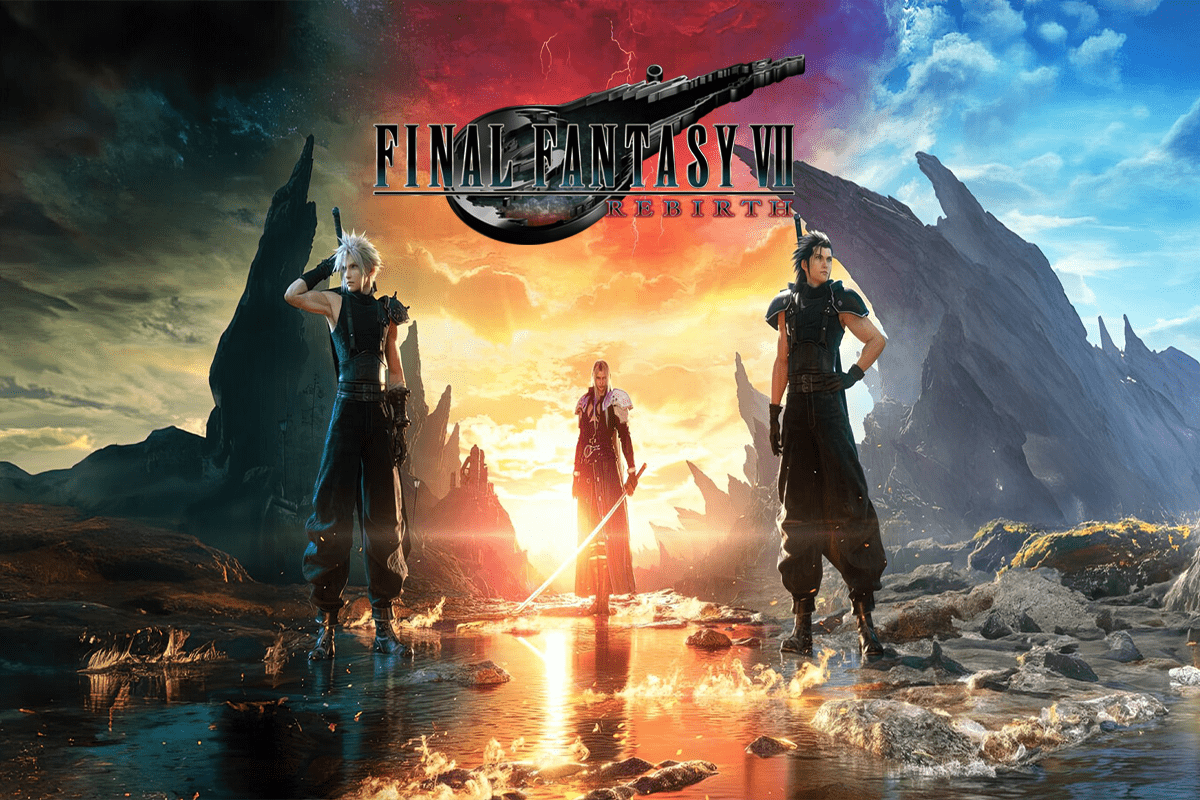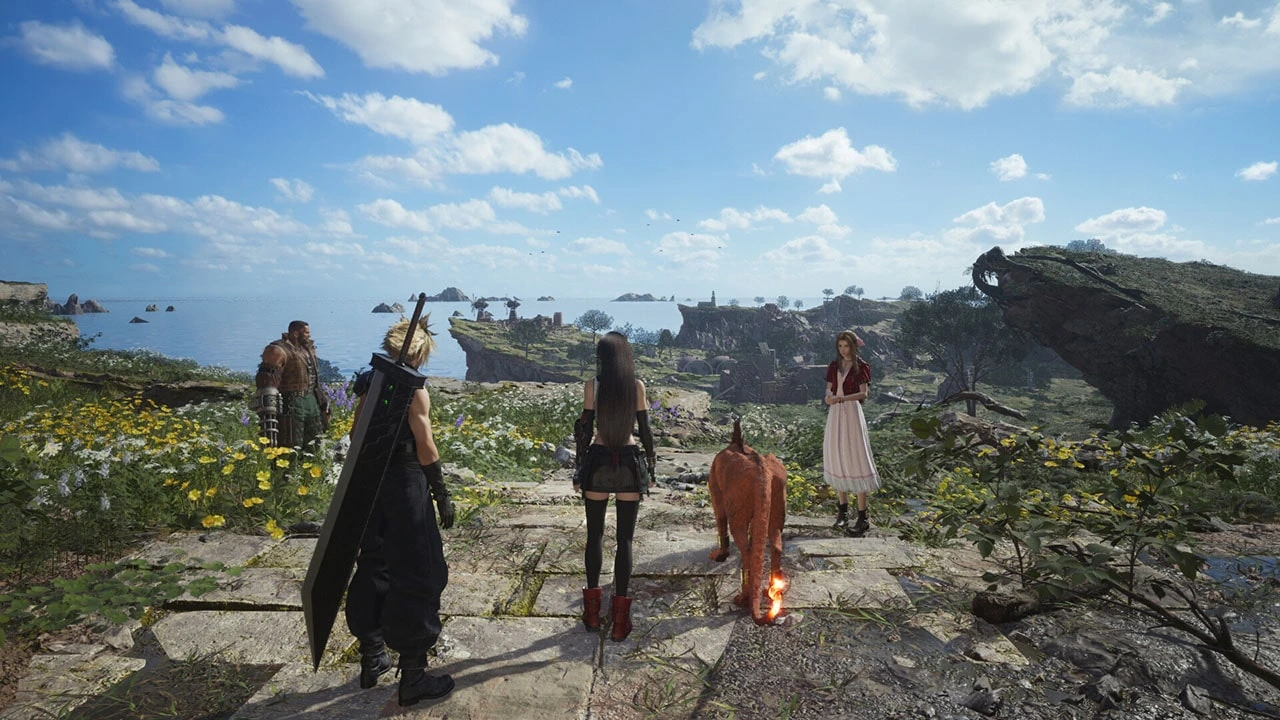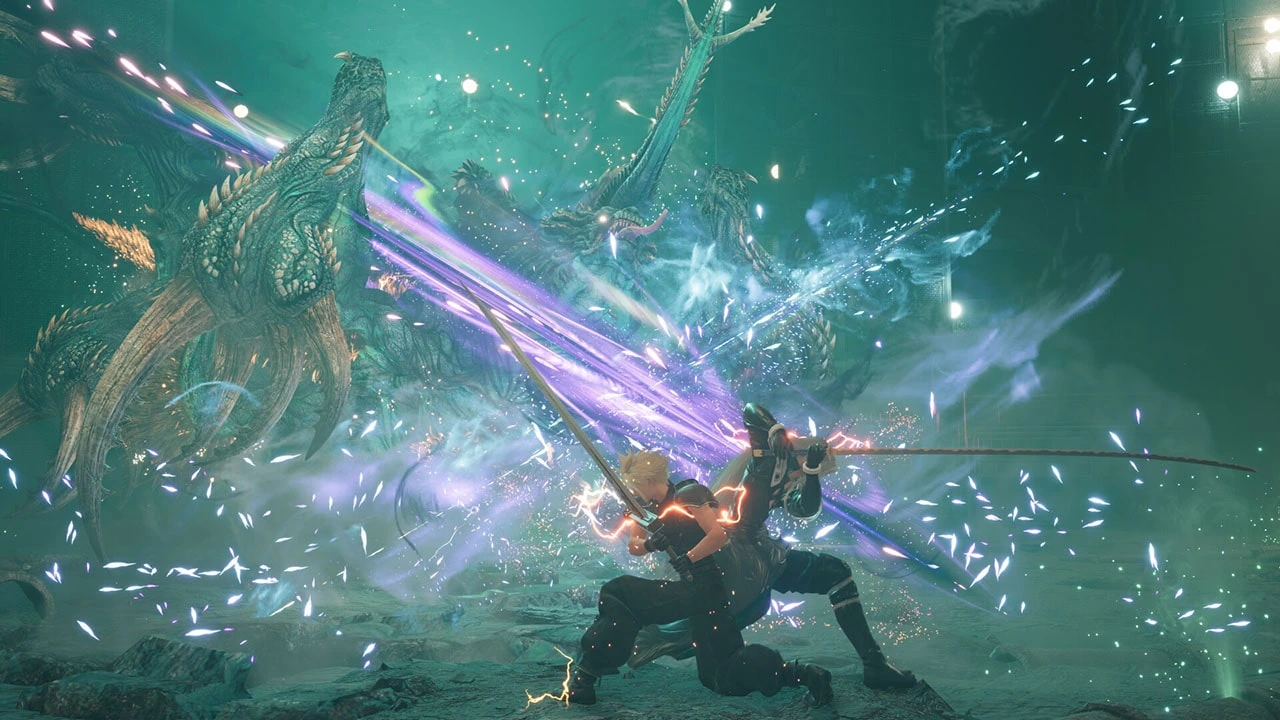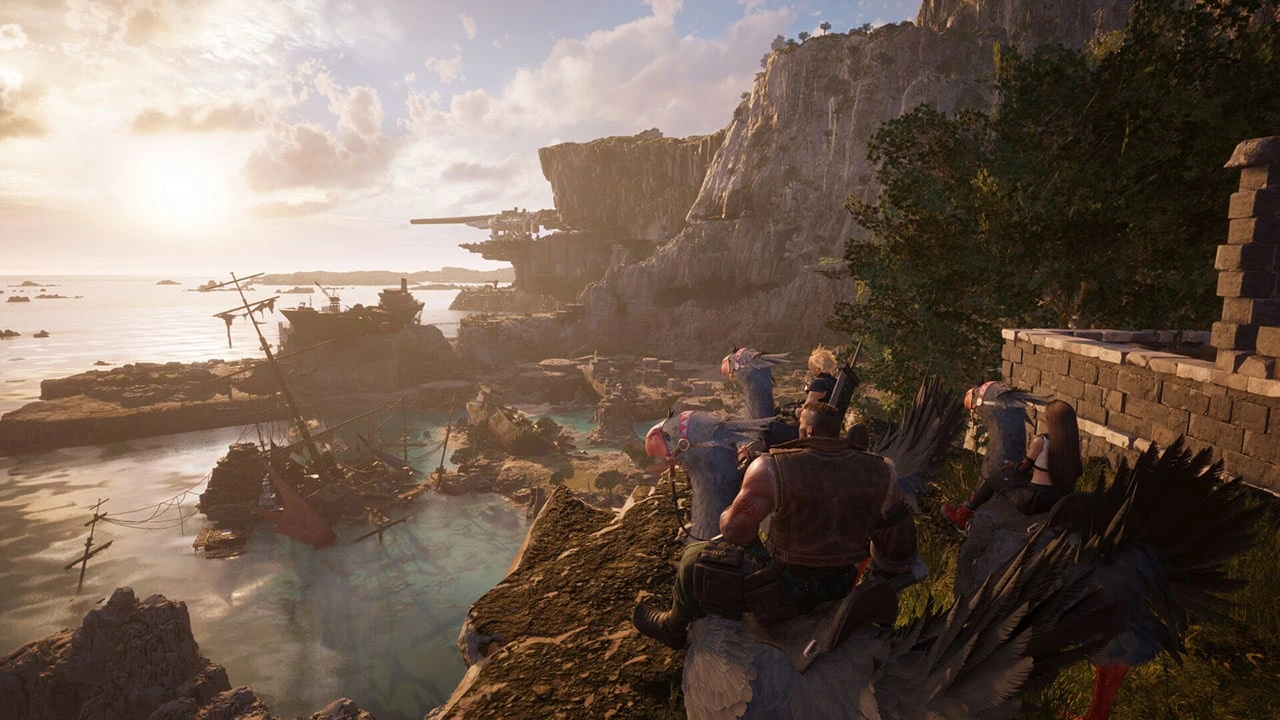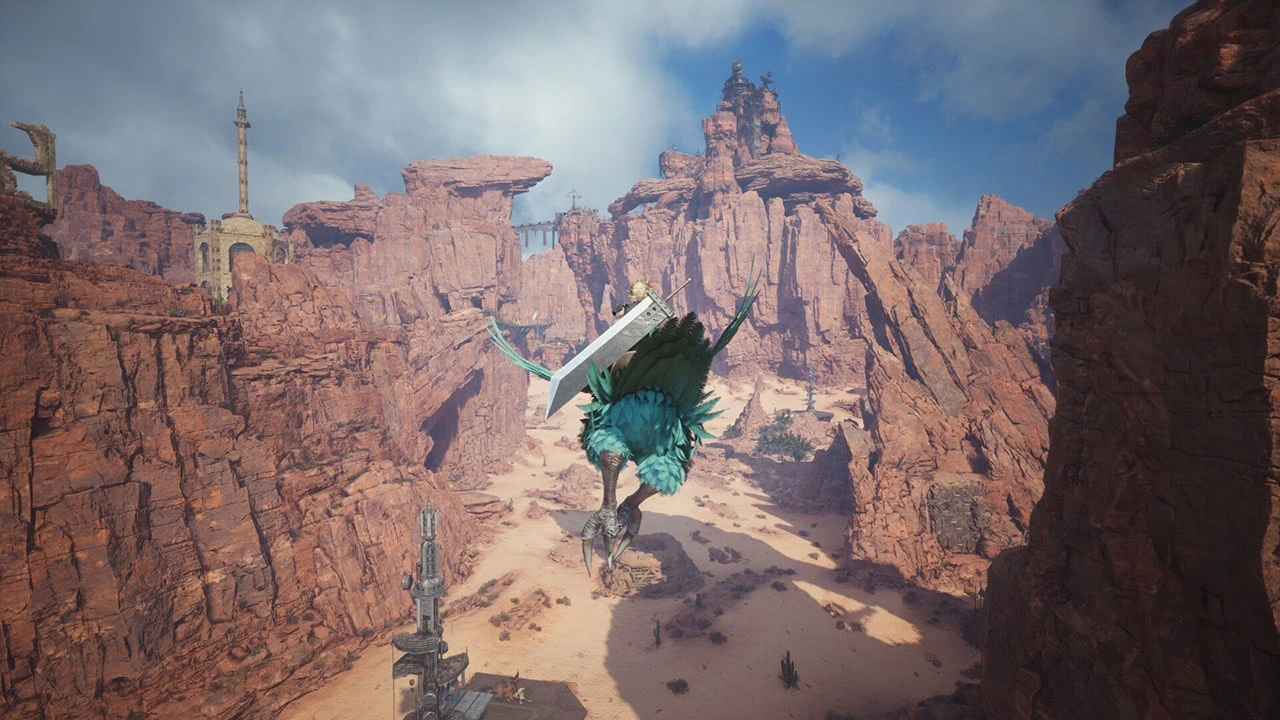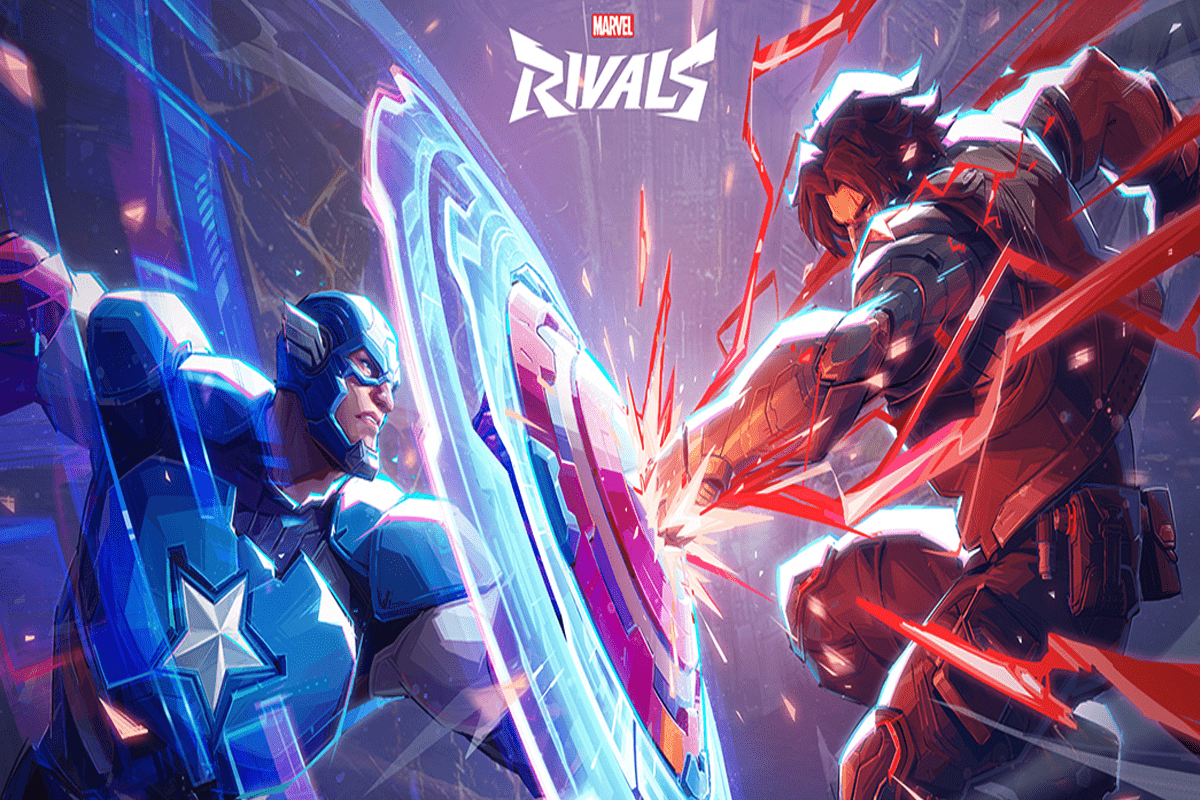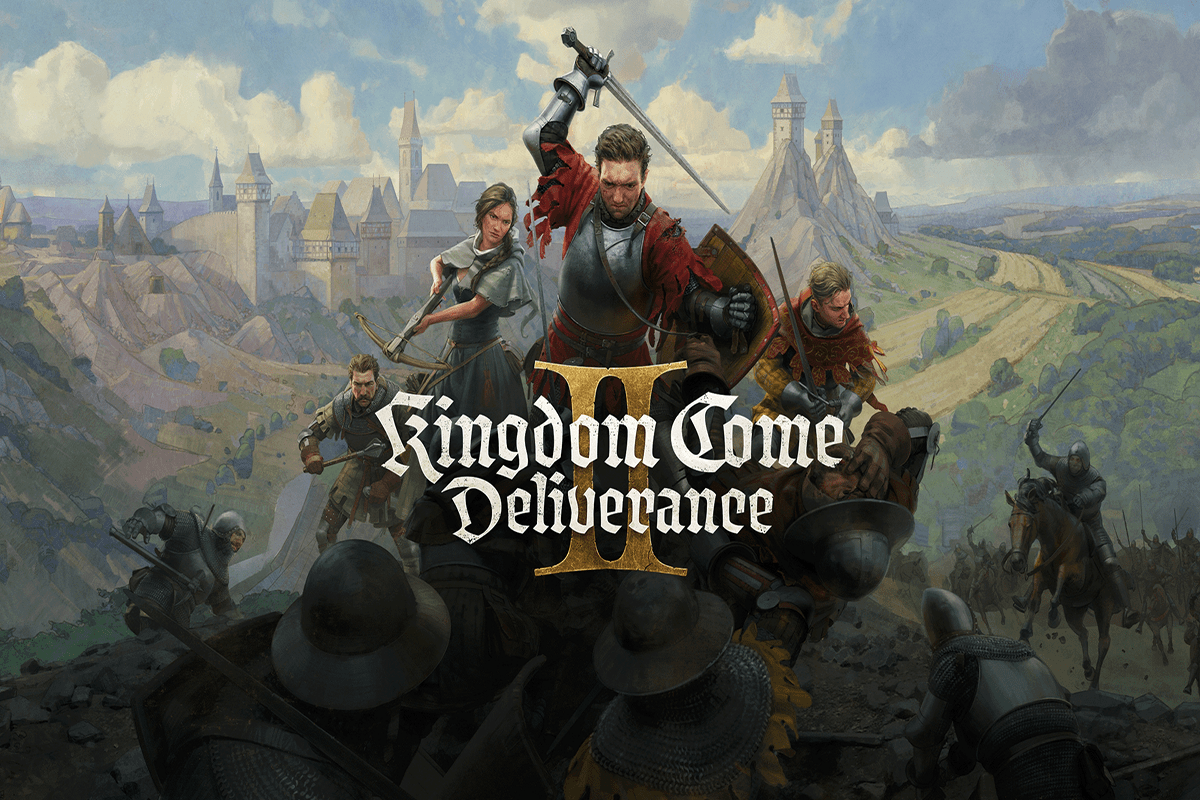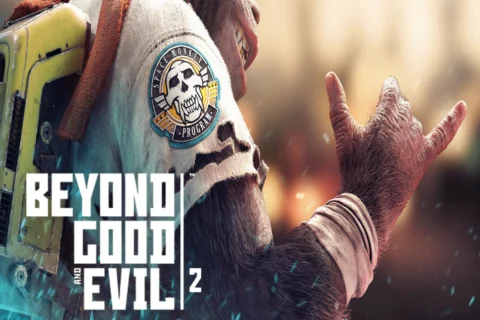A Triumphant Evolution of a Timeless Classic
Game Introduction
Final Fantasy VII Rebirth, the second game in Square Enix’s ambitious remake trilogy, is a master lesson in reinventing one of the greatest RPGs of all time. Released on February 29, 2024, for PlayStation 5 and January 23, 2025, for PC Games, the game follows Cloud Strife and his battle against the evil Shinra and the foolishness of their agent, Sephiroth. Building upon the foundation of FF7R, Rebirth expands the world, adds depth to its cast, and adds new gameplay mechanics. This was not easy to accomplish, and was finally completed through a combination of beautiful artwork and animation, great storylines, and reengineered combat, and so Final Fantasy VII Rebirth was born – a true epic that pays homage to its own predecessor but finally moves forward as an individual title.
Gameplay: A Perfect Blend of Nostalgia and Innovation
Final Fantasy VII Rebirth keeps the hybrid action-RPG battle system of Remake that fuses real-time action with turn-based, strategic command. Gamers will have the ability to control a party of three characters simultaneously, using soul power to quickly alternate between the lead character and the two back-up team members in an effort to create devastating combo attacks. Each character has a different sort of play style: Cloud’s normal bound-hand-to-hand sword moves, Tifa is close combat and has a martial arts mod, Barret is a range fighter, and has special moves like Yuffie, who is a ninja and would bring fresh mechanics and enemies to the fights. The game also includes a completely reworked Materia system, letting players adjust their spells, abilities, and summons with more freedom by using secondary skills and companions to share the experience of in-game combat.
Exploring is also a huge thing throughout Rebirth. The game expands beyond the never-ending halls of Midgar with Huge, open world zones, including the Grasslands, Junon, and the Gold Saucer. These are filled with side quests, mini-games, and hidden treasure – they’re part of what gives players a reason to explore the game world. Chocobo riding returns with a new twist to make transportation easier and still bring things to playable life.
Gameplay also includes a crafting system to create new weapons, items, and upgrades; all things are built from resources, things found in the environment, and from stepping on ants. This brings in a tactical level of resource management where exploration is not just for the sake of pure exploring. At the same time, Rebirth has plenty of mini-games that are fun to play to take a break from the story, like the Fort Condor strategy mini-game, Chocobo Racing, and card games—all of which will pass the time for a few hours at a time.
Characters: A Deeper Dive into Beloved Personalities
Final Fantasy VII Rebirth is great at character-driven story, and develops every member of the party in turn. Cloud’s own identity crisis and his relationship with Sephiroth are as much of a focus as ever, but you also get a closer look at the emotional journeys of his comrades in arms.
Aerith Aerith is given more focus, with her enigmatic link to the Planet and her growing connections to Cloud coming to the fore. We get to see a bit more of Tifa’s devotion and caring, which we see with Cloud and Barret. Barret, in turn, is fleshed out more, with his green politics and paternal love for Marlene taking centre stage. Up-and-comers Yuffie and Vincent (who gradually attach themselves to the party in this game) introduce unique elements to the company, and old favorites like Red XIII and Cait Sith are fully playable, with their own abilities and personalities.
The villains are every bit as good. The brooding Sephiroth casts a shadow over the entire affair, and his backstory and ties to Cloud are elaborated upon. Shinra’s executives, from president Rufus to the cold-blooded Heidegger, are depicted with a fine balance of menace and dark humor that creates lasting adversaries.
Story Narrative: A Bold Reimagining of a Classic Tale
Final Fantasy VII Rebirth is next after Remake, and begins with Cloud and his friends leaving Midgar as they give chase to Sephiroth, and find the truth behind his machinations. The story largely follows the contours of the original game, but Rebirth takes liberties that are mind-blessing by comparison, positing some new plot twists and expanding upon underdeveloped aspects.
The game touches on issues of identity, loss, and ecology, and is centered around the results of humans exploiting the Planet. The back story for the Cloud and Sephiroth rivalry in the game is expanded, flashbacks and hallucinations reveal some of the dark history between the two. Aeris’s last surviving Cetra status is overemphasized, and she’s one of the Planet, so her character carries a little more weight.
The most crucial development is when the “Whispers” are introduced, enigmatic beings working toward seeing the first timeline play out again. This macrocosmic element brings a sense of mystery as the characters struggle with the concept of fate and whether or not one can change their fate. The ending of the game is shocking, and yet emotionally satisfying, with the stage set for the last part in the trilogy.
Graphics and Sound Design: A Visual and Auditory Masterpiece
Final Fantasy VII Rebirth is a stunning visual feast for both platforms, Microsoft Windows and PlayStation 5. The character sprites are high resolution and beautiful, and you can be just in awe of how beautiful the world features lifelike facial animations, and never stiff, lifeless animation with realistic facial animations. The zones are impressive as well, ranging from the artillery-green expanse of the Grasslands to the garish, neon-drenched splendor of the Gold Saucer. The game’s lighting effects and particle effects are jaw-dropping, especially where spellcasting and Limit Breaks are concerned.
Great sound design as well. Nobuo Uematsu’s memorable score is rearranged here with updated orchestration that combines nostalgic familiarity with modern enhancements. The voice work is brilliant, both cast delivering a performance full of pathos for the sake of the plot.
Replayability and Content: A Wealth of Experiences
Final Fantasy VII Rebirth is packed with content that players can explore for dozens of hours. The core story alone is over 40 hours to play, and that’s before you even delve into the side quests, mini-games, and other optional content. The game’s open-world zones are crowded with side activities, including hunting rare monsters and solving environmental puzzles.
New Game Plus mode enables you to relive the story with all previously obtained weapons, skills and unlocked costumes New difficulty levels for those who are willing to accept the challenge Hard Mode: fine tuning of all combats on the game (particles feedback, camera positioning, slower animations, rebalanced battles, removal of some objects like invisible walls and more) The game also contains a photo mode, which will help players take and share their favorite in-game photos.
Verdict
The Good
- Deep, engaging combat system
- Stunning visuals and sound design
- Expanded character development
- Rich open-world exploration
- An emotional and thought-provoking story
The Bad
- Narrative changes may alienate purists
- Open-world sections can feel bloated
- Some side quests lack depth
Genre and Platforms
Final Fantasy VII Rebirth is an Action RPG that plays in real time as you use the talents of each member of your party to dispatch enemies. The game was released on February 29, 2024, and is exclusive to PlayStation 5. Later, the game was also released for Microsoft Windows for PC Games on January 23, 2025. It’s also the second in the Final Fantasy VII Remake series, and the final game in this series is slated to conclude the story, somewhere down the line, over the next few years.
Final Fantasy VII Rebirth System Requirements
Minimum
- OS: Windows® 10 64-bit
- Processor: AMD Ryzen™ 5 1400 / Intel® Core™ i3-8100
- Memory: 16 GB RAM
- Graphics: AMD Radeon™ RX 6600 (RX 6600 or above required) / Intel® Arc™ A580 / NVIDIA® GeForce® RTX 2060 (RTX series required)
- DirectX: Version 12
- Storage: 155 GB available space
Recommended
- OS: Windows® 11 64-bit
- Processor: AMD Ryzen™ 5 5600 or Ryzen™ 7 3700X / Intel® Core™ i7-8700 or Core™ i5-10400
- Memory: 16 GB RAM
- Graphics: AMD Radeon™ RX 6700 XT / NVIDIA® GeForce® RTX 2070
- DirectX: Version 12
- Storage: 155 GB available space
